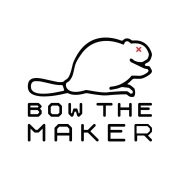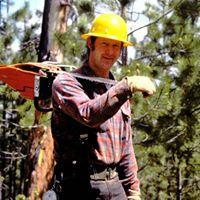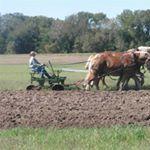-
Posts
216 -
Joined
-
Last visited
About JAM
- Birthday 01/07/1956
Contact Methods
-
Website URL
http://www.mhleather.com
Profile Information
-
Gender
Female
-
Location
Rathdrum, ID
-
Interests
Saddlemaking, braiding, strap goods, handbags/purses, riding (learning dressage), building farm machinery, making tools
LW Info
-
Leatherwork Specialty
Saddlemaking, Braiding, boots and shoes
-
Interested in learning about
More about shoe and boot making
-
How did you find leatherworker.net?
Word of mouth
JAM's Achievements

Member (2/4)
-

How to adjust Cobra class 4 outer presser foot down
JAM replied to JAM's topic in Leather Sewing Machines
Thank you! That's very clear. While waiting I took the face plate off, sprayed a lot of WD-40 up and down the rod, then loosened all the screws that seemed to be involved, and it went thunk down to the needle plate like I wanted. It was stuck. Problem solved for the moment and your diagrams and instructions are very much appreciated. Where did you get them? They are much more useful than any of the documentation I got with my Cobra when it was new (probably 15 years ago). -
I need to stitch some webbing straps together on my Cobra class 4 and to my surprise the outer presser foot won't go all the way down to hold the material in place. I don't know if I inadvertently changed something or if it's always been that way and I never noticed, but now I need to know how to adjust the height of the outer presser foot. The documentation says something about a "banana slider" but I can't locate that on the machine so it didn't help. This can't be a difficult adjustment to make, but I can't find it. Help?
-
Thank you, that helps.
-

Recommended stitching machine for new shoemaker
JAM replied to JAM's topic in Leather Sewing Machines
Thank you! -
I'm using heavy leather for soles and yes, working on the last.
-

Narrow feed dog FLAT Plate for Cowboy CB4500 and Cobra 4
JAM replied to Patrick1's topic in Leather Sewing Machines
Hello, Patrick, do you still have any of the narrow feed dogs and plates left? I have a Cobra 4. -
I've got a great Cobra class 4 machine that I've used happily for years for saddles and strap goods, but I'm learning shoe and boot making now (just for me) and between my saddle machine and regular fabric sewing machine I'm getting by but get seriously stuck assembling uppers and linings. I want to find a post bed sewing machine (I know they're expensive and I don't want to waste my money) - recommendations for a decent beginner level machine that won't break the bank too badly?
-
What is your favorite, most reliable glue for soles?
-
Tastech - thank you - your entire post was very educational. "Breaking" the leather in difficult spots, the differences in conditioners, polished, and waxes, all very helpful, thank you. Mink oil base conditioners, Saphir and Collonil - I'll look for those.
-
Mulesaw - I started with just shoes, some books, some digital patterns I bought on line, and lots of trials with a pair of lasts that were custom made by podohub. Lots of masking tape patterns, trial shoes first made of felt, altering the lasts a bit, then making several trial shoes out of whatever leather I had on hand (ugly soft chaps leather, mostly). I've printed lots of pictures of different shoes and boots to look at how their patterns are put together, studied my own custom boots from long ago, and watched a lot of YouTube videos about making shoes and boots. Every shoe (and now paddock boot) I make is a trial and I alter the pattern as needed for the second shoe or boot in the pair, then keep the altered pattern. I'm not using good leather until I have the pattern and process down. I wear the pairs that work and learn from every shoe or paddock boot I make. The tall riding boots will be easier to figure out after I have a handle on the paddock boots. We are blessed with a ton of information available these days.
-
It's now a year later and I thought I'd tell the end of this tale. The bootmakers in England gave up and fully refunded my money (I even profited a little by the change in the currency exchange rate between when I sent the money and when it was refunded - yay!). Tried a different bootmaker here in the USA; they were okay but had to be sent back and remade because the first set was clearly done wrong. (I have custom western boots which are great, but there are very few custom English riding boot makers). So then it hit me: if I can build custom saddles, which I have for many years, why can't I learn to build my own shoes and boots? It's very different from building saddles, and takes different tools. I've learned about buying lasts and then modifying them for my feet, and making patterns, and tried several kinds of sole construction, and it's fascinating and absorbing and not easy. I understand now what the bootmakers were doing (and not doing, and doing wrong) because I understand the process now, and the difference between off-the-shelf, sort-of-custom, and truly bespoke. I've made four pairs of shoes now, am starting my second pair of paddock boots, and am working my way up to tall English riding boots. Everything I've made is vastly more comfortable than any pair of retail shoes or even custom boots I own because my lasts fit MY feet. I still have lots to learn and this is a fantastic new leather hobby! I never would have thought that a bad experience with a not-so-great bootmaker could open up a whole new world and passion. I do have a question, if someone has an answer to share: What do you do or use to finish the surface of the leather on a new pair of boots or shoes, and prepare it for polish? Do you just polish and wax like normal?
-
Since we're both new to this, you might enjoy this series of articles I just found the other day. Here's a link to one of the articles, and when you open this article you'll find the whole series. https://www.gentlemansgazette.com/creating-insoles-bespoke-shoes/
-
I'm still working on my first pair of shoes, but so far I like them a lot. I have nothing to compare them to, but in my experiments I find they take nails well and are easy to modify with a wood rasp and with both glued-on skirting leather and Sculpwood putty. Mine have the rail system rather than hinges and that seems to be working well, also, unless you run the heel up too far (then it takes some doing to put the pieces back in place).
-
Question: Should support for high arches be built/carved into boot/shoe lasts or added later? I'm just starting to learn how to build shoes (I've been doing leatherwork for a long time, and got a couple of good books to get me started on shoes). I've got bespoke lasts from podohub and I have high arches. The lasts don't have my high arches - the insoles seem to be fairly flat from the ball into the 15mm heel. Should the lasts have higher arches built in/carved away, or does arch support get added to the inside after the shoe/boot is built?
-
Thank you, all of you, for your comments. I'm a lot more confident now that the boots should be comfortable from hour one if they are truly custom made, and I should ask for a refund. These boots are tall English riding boots and there aren't many companies that make them custom; this company makes them in all kinds of colors and you can design whatever you want, which I suppose makes them "bespoke", but they still need to be custom fit to my feet. Thanks again for answering my question and for all your advice.






.thumb.jpg.891e1a568fe12892afcab0e6d40cb306.jpg)

